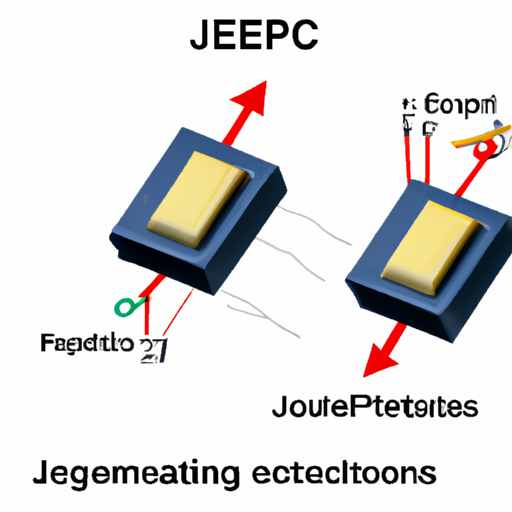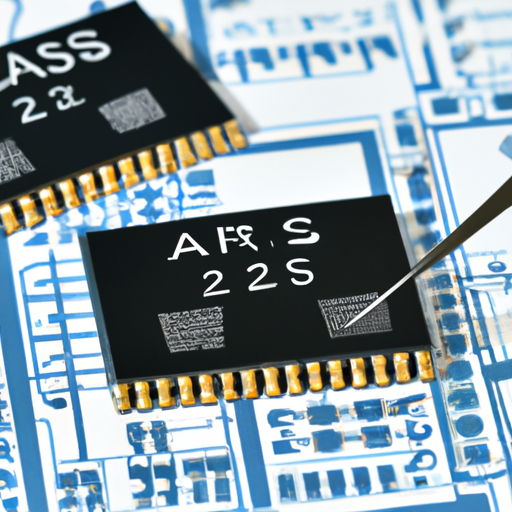CORE_COMPETENCE
Product_Leaders
index_more
index_more_content
info_item01
info_item_content01
info_item02
info_item_content02
info_item03
info_item_content03
info_item04
info_item_content04
NEWS
NEWS
application development in FET, MOSFET Arrays for ECQ-P1H153GZ: key technologies and success stories
Application Development in FET and MOSFET Arrays: Insights and Success StoriesThe ECQ-P1H153GZ capacitor, while not directly related to FETs or MOSFET arrays, plays a role in the broader context of electronic circuit design where these components are utilized. FETs and MOSFET arrays are integral to modern electronics, and their development has been driven by several key technologies and successful applications across various industries.
Key Technologies in FET and MOSFET Arrays1. High-Density Integration: The ability to integrate multiple MOSFETs into a single package has led to significant reductions in size and weight, which is essential for portable and compact electronic devices. This technology is particularly beneficial in applications like smartphones and wearables. 2. Low On-Resistance (Rds(on)): Innovations in materials and manufacturing processes have resulted in MOSFETs with lower on-resistance, enhancing efficiency in power applications. This is critical for applications such as power supplies and motor drivers, where minimizing energy loss is paramount.
3. High-Speed Switching: MOSFETs are favored for their rapid switching capabilities, making them suitable for high-frequency applications, including RF amplifiers and high-speed data converters. This characteristic is vital for telecommunications and data processing technologies.
4. Thermal Management: Enhanced thermal management solutions, including advanced packaging techniques and heat sinks, have improved the reliability of MOSFET arrays in high-power applications, such as industrial drives and automotive systems.
5. Smart Power Technologies: The integration of control logic with power MOSFETs has led to the development of smart power devices. These devices can optimize power distribution and consumption, making them ideal for applications in smart grids and energy-efficient systems.
6. Wide Bandgap Semiconductors (GaN and SiC): The introduction of Gallium Nitride (GaN) and Silicon Carbide (SiC) technologies has transformed power electronics. These materials allow for higher efficiency, higher voltage operation, and better thermal performance compared to traditional silicon MOSFETs, enabling new applications in high-performance environments.
Success Stories1. Electric Vehicles (EVs): MOSFET arrays are crucial in electric vehicle powertrains, particularly in motor control and battery management systems. Their efficiency and compact design contribute to improved vehicle performance and extended driving range, making EVs more viable for consumers.
2. Renewable Energy Systems: In solar inverters and wind turbine controllers, MOSFET arrays are essential for efficient power conversion and management. Their reliability and high efficiency are critical for maximizing energy harvest and ensuring the longevity of renewable energy systems.
3. Consumer Electronics: The integration of MOSFETs in power management ICs has led to the development of more efficient chargers and power supplies for devices like smartphones and laptops. This has resulted in longer battery life and reduced energy consumption, enhancing user experience.
4. Telecommunications: High-frequency MOSFETs are employed in RF amplifiers for telecommunications infrastructure, enabling faster data transmission and improved signal quality. This is vital for the expansion of 5G networks and other high-speed communication technologies.
5. Industrial Automation: MOSFET arrays are widely used in motor drives and automation systems, providing precise control and efficiency. This leads to significant cost savings and improved productivity in manufacturing processes, showcasing the importance of these technologies in industrial applications.
ConclusionThe advancements in FET and MOSFET array technologies have significantly impacted various sectors, driving improvements in efficiency, performance, and miniaturization of electronic devices. As these technologies continue to evolve, we can anticipate further innovations that will enhance their capabilities, leading to new applications and improvements in existing systems. The integration of these components with capacitors like the ECQ-P1H153GZ will continue to play a vital role in the development of cutting-edge electronic solutions.
2025-06-17
0
application development in Single Zener Diodes for 2474-26L: key technologies and success stories
Application Development in Single Zener Diodes for 2474-26L: Key Technologies and Success StoriesThe 2474-26L Zener diode is a versatile component widely used in electronic applications for voltage regulation and protection. Its unique characteristics make it suitable for various applications across multiple industries. Below, we explore key technologies and notable success stories that highlight the application development of the 2474-26L.
Key Technologies1. Voltage Regulation2. Overvoltage Protection3. Reference Voltage Sources4. Signal Clipping5. Temperature Compensation1. Consumer Electronics2. Telecommunications3. Automotive Applications4. Industrial Automation5. Medical Devices Success Stories ConclusionThe 2474-26L Zener diode exemplifies the critical role of Zener diodes in modern electronic applications. Its capabilities in voltage regulation, overvoltage protection, and providing stable reference voltages make it an invaluable component across various industries, including consumer electronics, telecommunications, automotive, industrial automation, and medical devices. As technology continues to advance, the significance of Zener diodes like the 2474-26L will persist, ensuring the reliability and performance of electronic systems in an ever-evolving landscape.
2025-06-14
1

























